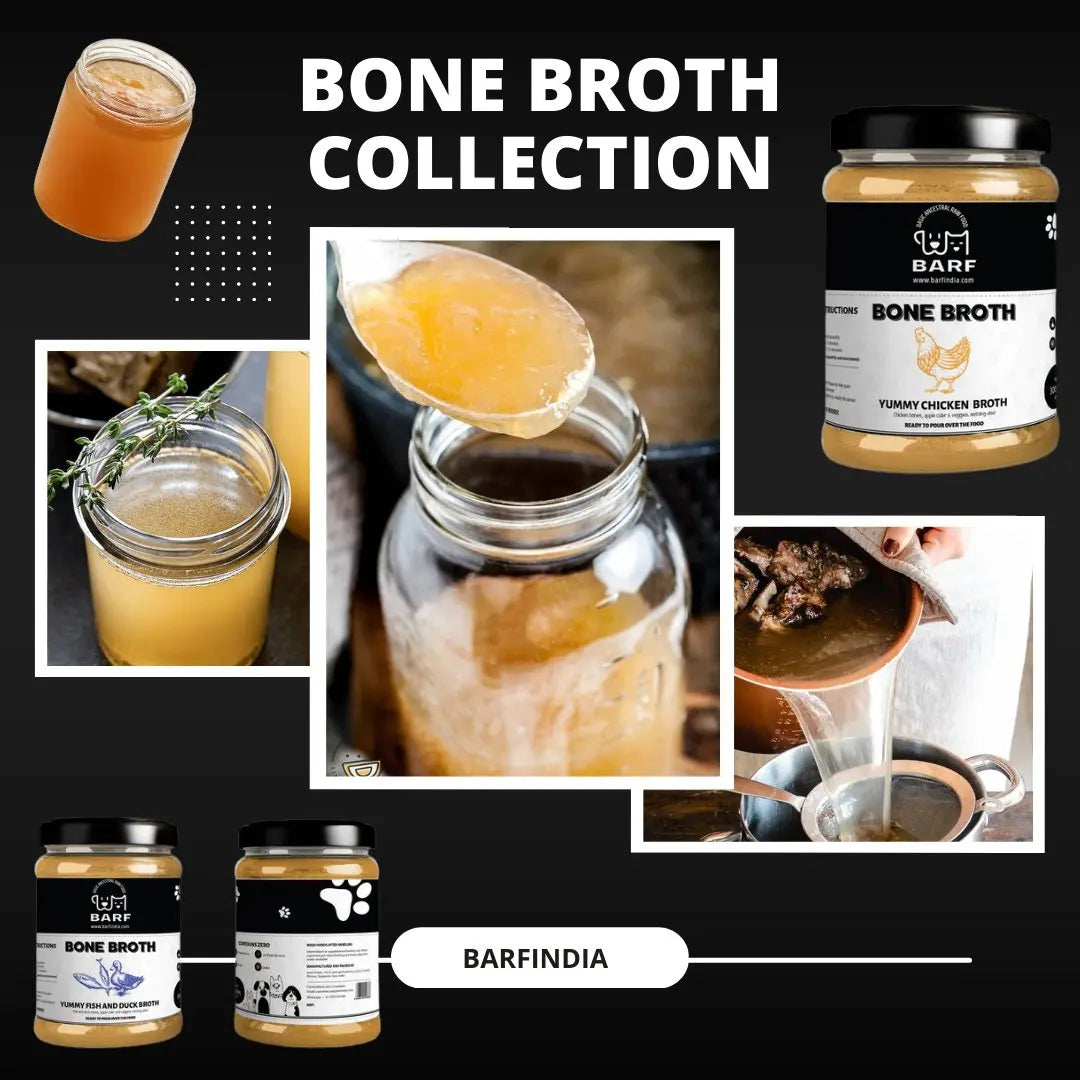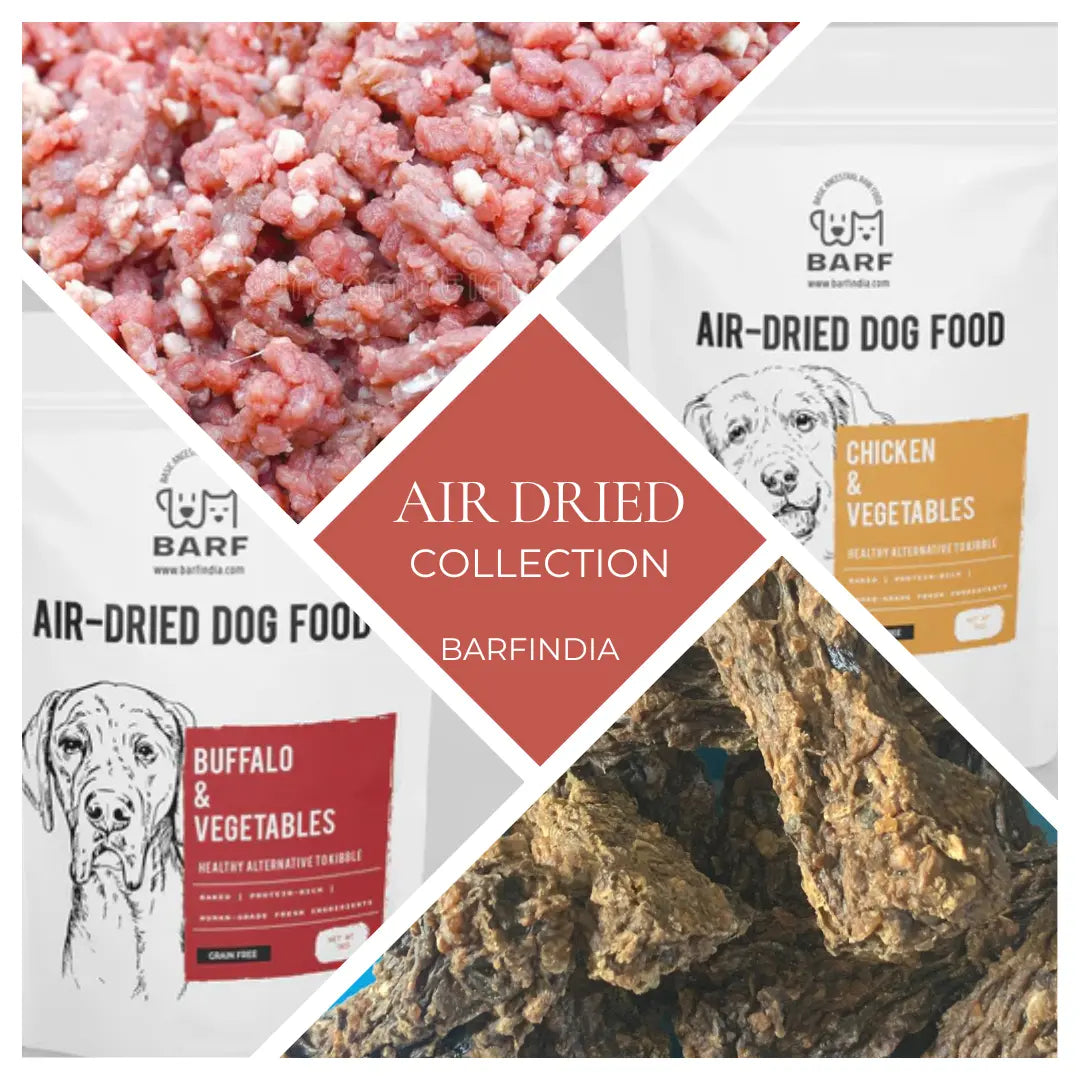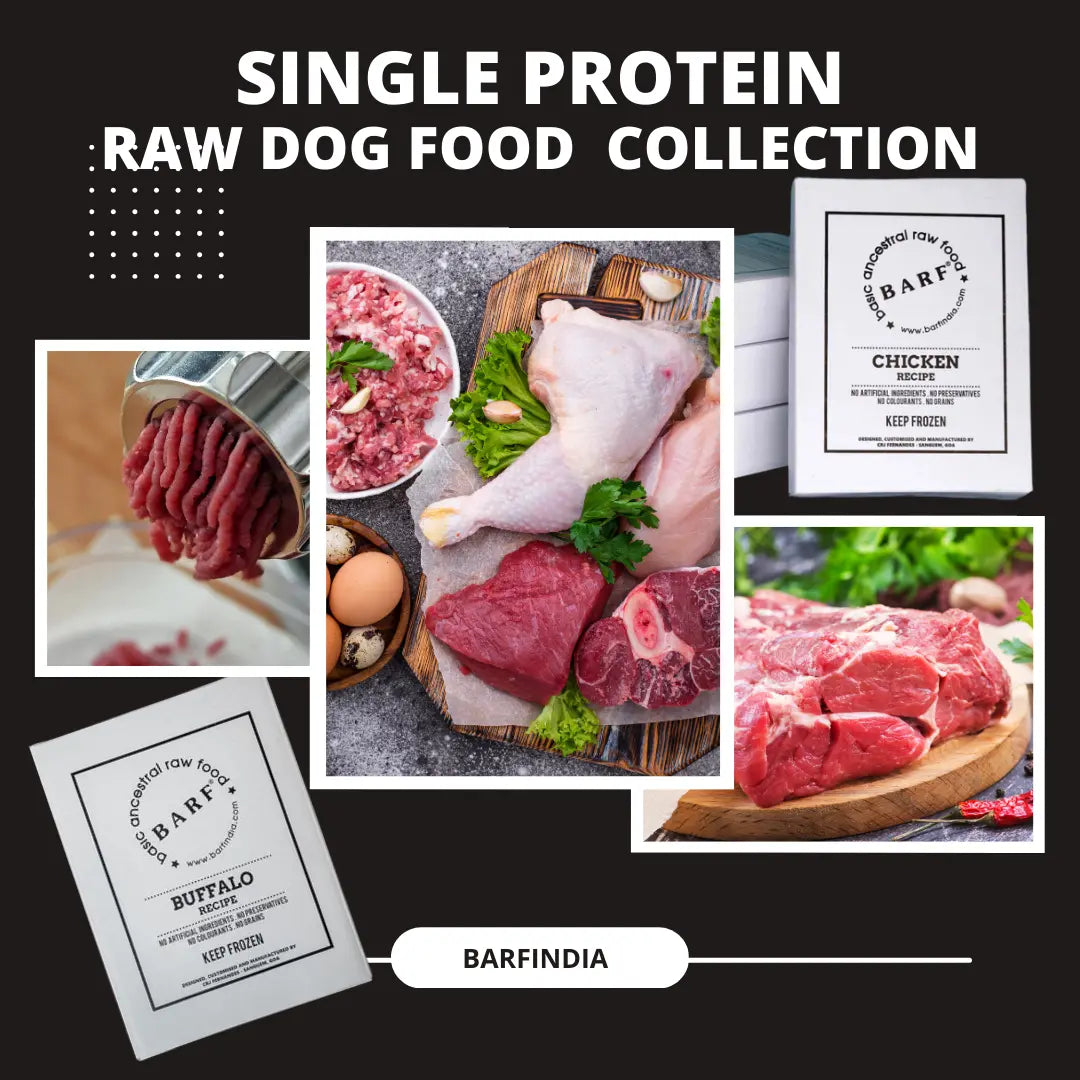
Dog Food and Omega 3
B.A.R.F. India AdministratorDoes your dog food include Omega 3?
We have heard of the numerous benefits of incorporating Omega 3 fatty acids in our diets. But did you know that your little doggie also requires having a source of Omega 3 in his/her diet?
Omega 3 as fatty acids:
Omega 3's are widely classified as essential fatty acids, which means that our body has a requirement for Omega-3 to function, but cannot generate on its own. Simply put, Omega 3's can only come from your dog's diet.
What are Omega 3's?
Omega 3's are known as polyunsaturated fatty acids or PUFAs and they are very crucial in improving brain function and they help with the general growth and development of the body. It is very important to ensure that you include some source of Omega 3's in your diet. STRIKE A BALANCE: Incorporating fats into your dog’s food is important, but you also need to ensure that the quantities of these energy sources are well balanced. When you dig a little deeper into fatty acid content in foods, you will come across another component – Omega 6 !!!
What is Omega 6?
Too much omega 6 and not enough omega 3, and bad things happen. These bad things are not minor, folks. Excessive intake of omega 6 fatty acids suppress cells that are key in the body’s natural cancer-fighting ability (Natural Killer cells and cytotoxic T cells). The omega 6 group promotes inflammation, which is critical in cancer development. They also stimulate cancer cells directly by turning on a path in the cancer cells called PI Kinase, one of the central signaling events in cancer cells which make them behave like…cancer cells.
Why should there be a balance?
Both Omega-3 and Omega-6 are fatty acids, however, with broadly varying functions. Omega-3 is anti-inflammatory and Omega-6 is pro-inflammatory. Does this mean Omega-6's are bad for your dog? Absolutely not. The body needs to produce antibodies to counteract any foreign body, and this is only possible with an active immune system that triggers an inflammatory response. Without a proper inflammatory response, your dog’s immune system will fail and cause degeneration of body organs over time. This is why it is extremely crucial to balance your dog’s diet so that they receive the right ratio of Omega-3 and Omega-6.
What happens if there is an excess of Omega 6 in your dog food?
If your dog predominantly eats animal meat with no other source of Omega-3s, you may unintentionally be causing an imbalance in their body. This may be overwhelming to newbies who are just starting out with raw dog food, but the key is to start somewhere. You need to try to ensure that these food sources are balanced in the best way possible to keep the ratio as low as you can. Raw feeders must always include some fish in their dog’s bowl. First and foremost, your dog will not able to resist the taste, and secondly, you are providing all the good Omega-3s to keep them healthy. A few other great plant-based sources of Omega 3's are chia seeds, hemp seeds, and flax seeds, all of which are completely safe to feed your dog.
OMEGA 3 HEALTH BENEFITS:
While dogs and humans have very different growth and digestive system requirements, Omega 3 fatty acids can help both these species immensely. Let’s look at what this super-food source can do for our dogs!
-
Inflammatory Skin Disorders
Due to the anti-inflammatory properties, Omega 3's help in reducing several skin-related issues including dermatitis (skin allergy), excessive shedding leading to bald spots, development of heat spots, itchiness, dull coat etc. Research shows several dogs benefited from consuming some amount of Omega 3's every day leading to a healthier and shinier coat, lower occurrences of skin allergies and lesser shedding.
-
Cardiovascular Function
Just as scientific studies have shown a reduction in the risk of coronary disease in human beings, dogs that consumed Omega-3s in their diet, produced a lower amount of inflammatory cytokines leading to better heart health – this includes lowering of heart rate and blood pressure to optimum. Results have also shown better survival rates in dogs that suffered from any type of heart disease (dilated cardiomyopathy, chronic valvular disease, ventricular arrhythmia). Omega 3's help reduce cholesterol and triglycerides levels in the blood, leading to a healthier heart. -
Osteoarthritis
As mentioned above, Omega 3's help reduce the amount of inflammatory cytokines in dogs. This also means that these fatty acids can reduce the risk of bone diseases including osteoarthritis. Dogs have shown improved locomotor ability and higher energy on a daily basis after consumption of Omega 3'sin their diet. -
Yeast Infections:
If you have noticed a pungent odour in your dog’s paws or ears it mostly likely indicates a yeast infection. Yeast can spread rapidly to other parts of the body and even transmit to humans. Omega-3s have been shown to reduce the growth rate of yeast infection in dogs (for example, Malasseziapachydermatis). -
Cancer:
Every pet owner’s biggest fear is this very word – Cancer. With the increasing rate of dog deaths due to cancer, it is the undeniable truth. Unfortunately, the over-processed commercial food has been a contributory cause to the rise in the epidemic. -
Overall Health & Happiness
Dog food that includes some source of Omega 3's are generally healthier, have higher energy levels. Some research also shows that it has shown to reduce aggression in dogs. This may be due to the improvement of the overall health, leading to happier pets.
It is generally better to include more natural sources of Omega-3's in your dog’s food. Natural foods like fish, Salmon oil, Krill oil, hemp seeds/oil etc are all excellent sources of Omega 3. While there are several supplements on the market, natural whole foods and species appropriate dog food have proven to be highly beneficial in maintaining better health. It is the responsibility of every pet owner to ensure that their dog food is retrieved from trusted sources. It is also every pet owner’s right to know exactly what ingredients are used in their dog food. The best way to do this is to use real, whole, and natural dog food as possible.
Have you given thought to BARF – Basic Ancestral Raw Food?
The best way is to feed your dog a balanced, species-appropriate food. And the best option is raw.



